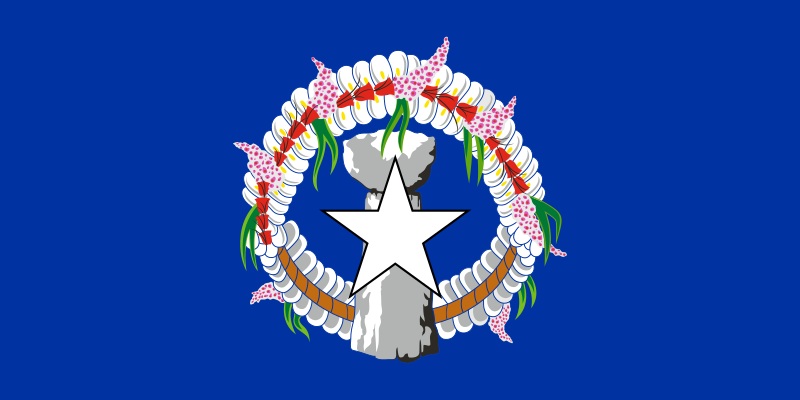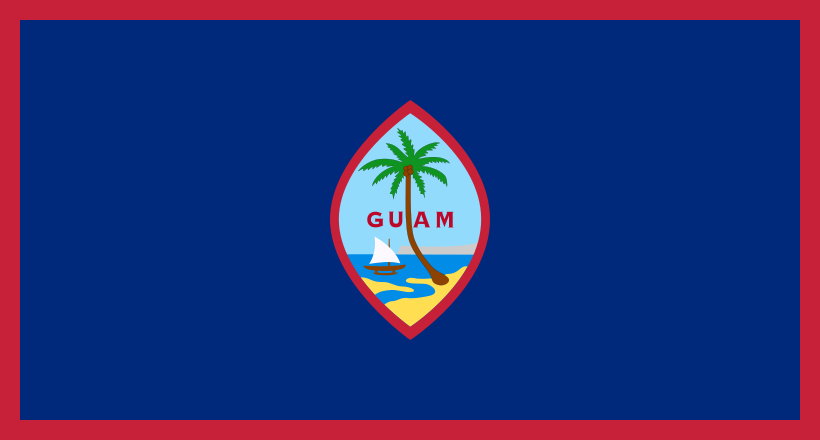The challenge
Edited to include visible flags instead of just links - I hope...
Weekly Flag Challenge № 225: There are no stars
Re-design an OTL national flag which features a star or stars.The re-design can be as simple or complicated as you want - the only rule is that the new flag must not have any stars at all.You may include the original flag in your entry if you want, but this is not a requirement.Submissions Open: Now (5th June)Submissions Close: about a week later: 1200 GMT 12th June
The entriesOne said:Kingdom of Tuvalu
No particular backstory for this, just a flag of Tuvalu incorporating elements of the coats of arms of Tuvalu and the Ellice Islands Colony.

I'm this quick because I was already thinking about this flag when I saw the challenge.
Two said:
Mariana Islands Republic national flag from TL-797
----
Excerpts from an MSSE dossier [1], based on information collected by the MIEC [2] of the IDA [3]:
"TL-797 shows some divergences in Oceania's geopolitics during the course of the 20th century, particularly after the second world war.
Similarly to TL-75 [4] and a variety of other timelines, the United States liberated the island of Guam from Japanese forces during the second world war. Soon after, the island became closely associated with the United States as an overseas territory, particularly for its strategic importance as a naval and aerial base in the western Pacific. However, unlike in TL-75, a local movement towards Guam autonomy or even outright independence took off years sooner, already during the late 1940s and early 1950s, among the Chamorro of Guam. The United States government had a relatively ambivalent attitude to these local efforts, but avoided antagonising the native population, as they couldn't afford to lose their trust easily. Given the post-war legal provisions, it was still legally possible for Guam to avoid becoming a permanent part of the United States, as an associated territory.
The situation in the Northern Marianas, to the north of Guam, was similar. Though the Chamorro people of the Northern Marianas were fairly satisfied with US economic and defence support and grateful for it, there had always been a more autonomy-minded streak to the Northern Mariana natives. Emboldened by the autonomy and independence activists in Guam, a grassroots pro-independence movement sprung up in the Northern Marianas during the course of the 1950s. The relationship of the Northern Marianas to the United States was even looser and more lenient than that of Guam, with the US administering the Marianas as a de facto democratic protectorate under the aegis of the United Nations. This gave the Marianas independence movement enough necessary manoeuvering space to push for referenda on unification with Guam, and later referenda on granting the territory a more autonomous status, more loosely associated with the US. This was to be a stepping stone towards full independence.
The first decisive moves towards independence, both by the local campaigners of Guam and the local campaigners of the Northern Marianas - now in regular mutual contact - were taken during the course of the 1960s and 1970s, in a series of local referenda every few years, with US and UN oversight to prevent potential electoral fraud or disruptions. During official negotiations before the referenda, a compromise was reached with the United States government, allowing the Northern Marianas independence as either two separate countries or a united country (of the Marianas archipelago), while the United States was allowed to loan the territory of the existing naval bases for the following century and require an associated/allied state status with the newly independent Marianas. Though many in the US government suspected the referenda would not be too successful, they were in for a series of shock referenda victories for the pro-independence and Guam-NM political unification campaigners.
The eventual result of all these pro-independence efforts was the formation of the Mariana Islands Republic, also known colloquially as the "Chamorro Republic", after the main, native nationality of the Marianas archipelago. Independence was officially declared on the 17th April 1977.
Ever since achieving its full independence, the Mariana Islands Republic has used the flag presented above, officially adopted in 1980. Fifteen alternating blue and white stripes, mirrored in each of the two halves of the flag, represent the total number of large islands in the archipelago (fifteen, including Guam). The circular seal style emblem represents the green shores of the individual islands, washed by the foaming blue-and-white waters of the Pacific. At the centre, with a blue background, stand two argent latte stones, a famous feature of traditional Chamorro architecture from an older period of Marianas history. These are topped by a simple conical roof of a native structure, symbolising the society of the Marianas as "one united, mutual house for all". The structure is based on the various native buildings, both practical and religious, that used to be constructed atop the latte stones in prior centuries, before the architectural practice fell out of common use. The conical shape of the roof of the structure is also reminescent of the conical, mountainous shape of many of the mountainous and verdant islands of the Marianas.
(It is said that the stripes of the US national flag and the "bedsheet and a seal" US state flags were an influence on the flag designers of the MIR, but they decided to go about things their own way, rather than slavishly imitate their loose inspirations. Some advisors to the Mariana Islands vexilological committee apparently lobbied for putting fifteen stars on the flag, but this was shot down, as many in the comittee felt that stars are already overused on the national flags of Pacific Ocean countries and territories, and would also seem too US-inspired. Some people had also lobbied for the inclusion of a fourth colour, either golden or yellow, but this was rejected, as it was felt that less is more in terms of colour, and green, white and blue had a simple, natural and soothing quality to them.)"
----
Notes:
[1] - Multiverse Sociopolitical Survey Expedition
[2] - Multiverse Institute Exploration Corps
[3] - InterDimensional Alliance (a sort of multiversal UN/NATO)
[4] - OTL


Yeah, I don't like the OTL official flags of the Northern Marianas and Guam. The latter is just groanworthy, and the former would be actually quite good if it lost that bighuge star at the centre. I think it basically ruins what would be an otherwise decent flag, obscuring the latte stone that's meant to be an unmistakenable Marianas reference. Pity they designed it this way, some earlier designs didn't have that overbearing star that makes the flag look far too busy and layered. I wanted to get rid of the lame Guam flag and improve upon the NM flag, so in one fell swoop, I killed two birds with one stone, and here's the result. No stars, whether just one or several, a fairly original layout, and hard to mistake for any other national flag out there, whether in Oceania or other parts of the world.
Also, my first contest entry ever, eight years and some three months ago, was a flag with a Pacific Ocean theme, so you could say I'm finally revisiting my roots as a contestant in the Weekly Flag Challenge.
Three said:The current flag of the Autonomous Republic of Gagauzia is derived from that of the Gagauz Republic which declared independence from the Soviet Union. Said flag was sky blue with a gold bar near the hoist and featured a grey wolfhead on white.
Following the joining into Moldova and establishment of autonomy the wolfhead was dropped due to usage by PanTurkish Terrorists.
It was replaced by grey fleur de lys, apparently inspired by a Quebecan diplomat involved in the autonomy negotiations.
The outermost bars of the flag are red and gold in allusion to the Moldovan flag.
The recent Independence Party and Gagauz Nationalists use a variant without the red.

Four said:
The Empire of Brazil would become a republic in 1889 under the name "Republic of the United States of Brazil". There were several different black-red-white or green-yellow designs to replace the Imperial Flag. The design that was eventually chosen included all five colours. The colours of the tricolour represented the three principal ethnic groups of Brazil. Red being the native Indians, white the European settlers and immigrants and black the Africans. The flag also featured a green Portuguese Cross and a golden armillary sphere. Both (except for the colour of the cross) being symbols both the Portuguese Empire and the Brazilian Empire were included in the flag as a sort symbolism of continuity. This way black-red-white and green-yellow were both featured on the flag.
(I was going to leave the cross red but did not work well)
(This is separate from my timeline-in-progress, just for the contest)
Five said:A flag for a autonomous dominion of the Phillipines, under Spanish sovereignty. Basically the Phillipines never got their independence until after WW2. I'm not well acquainted with Phillipino history so i don't how this could've happen or what implications it would have.

Edited to include visible flags instead of just links - I hope...
Last edited: